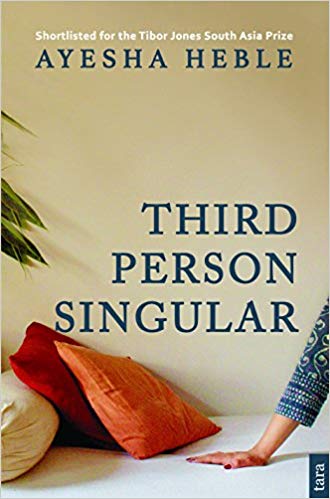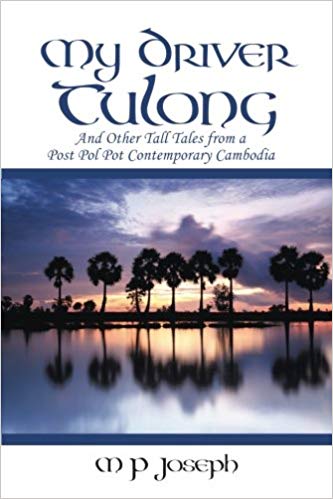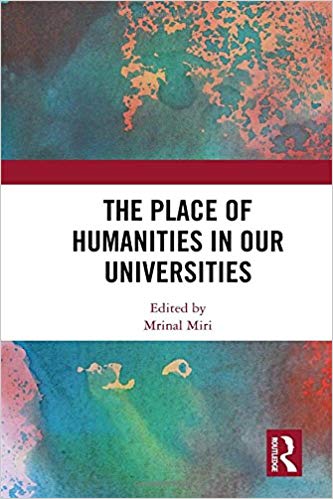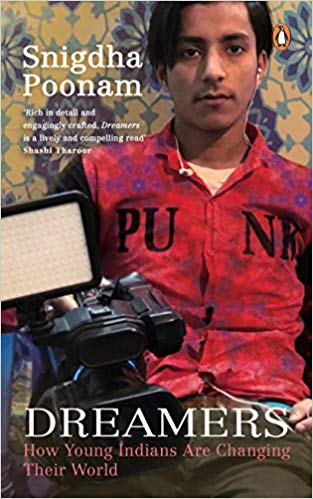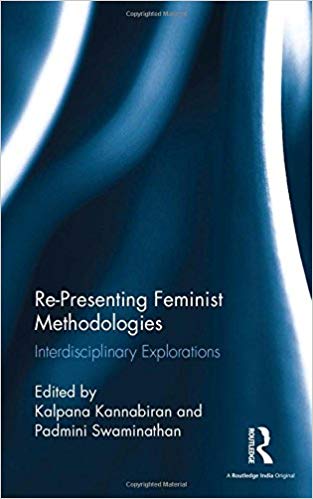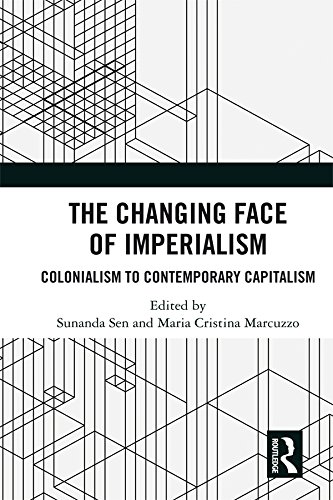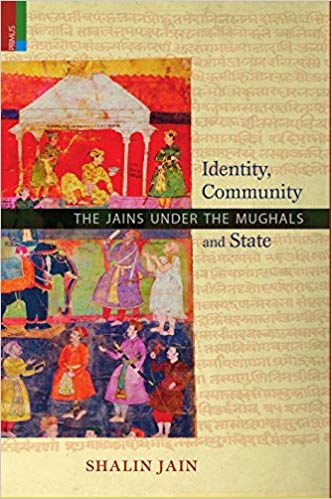The author was in the MP cadre of the IAS and had a distinguished career both in the central and State governments. This is not an autobiography; it is a well written account of his interesting experiences. In this sense, the author is a chip off the old block. His father BN Lahiri was the first Indian IG of UP police.
Archives
July 2018 . VOLUME 42, NUMBER 7In a college in Delhi that doubles as a university, a temporary lecturer sues the English department for not selecting her for the regular post throwing the staff room in turmoil. As the drama unfolds, several characters march onto the stage each involved in their own struggle to define their selves as individuals trying hard to break free of the social confines of religion and gender. Not an easy task even today but back then in the last decades of the twentieth century these quests were even harder.
2018
In early twentieth century Bombay Zahan Merchant is born to a couple living in the city’s Parsi colony. His is a regular birth and nothing out of the ordinary happens until he reaches age seven or so. Things start to turn with the incident of the missing blue box of Aunt Feroza, a member of the Merchant household. Zahan makes a wooden box appear as the blue coloured, missing one. Except for his elder brother Sorab, the family is relieved and happy. Though somewhat wiser than Zahan, Sorab is unable to understand how Zahan could bring the box, broken by none other than Sorab himself, back to life; or, make it appear to be the real one.
There are any number of literatures in the world that should be better known. The problems, as always, are of translation and publication. Literature in India suffers particularly from these issues, that is why so many writers have chosen to write in English. In English your audience is immediately vast and so makes up a worldwide market. But if you choose to write in Tulu, Meitei, Konkani, or Santali, the situation is certainly otherwise. So what can we say about literature from India written in Portuguese? Portuguese speakers in India have dwindled to the vanishing point.
MP Joseph vehemently insists at the outset that this book is a work of fiction and that the narrator—who coincidentally shares his name—too is a fictional character. It is perplexing why he has gone to such pains given that the narrator shares a biodata uncannily similar to his own: from a childhood in Kerala to working as a banker and then an Indian civil servant before joining the United Nations bureaucracy and serving a tenure in Cambodia. Doubtless this prestidigitation allows for greater freedom in describing people and situations, and provides a window of deniability while concocting this rollicking narrative.
2018
Missing is set in a disturbing milieu: India’s North East in 2012. Critical reports from an English newspaper from July 24, 2012 to July 30, 2012 form an integral part of the novel—not to speak of the general derision with which news, per se, is viewed. Although much of the action happens in the relatively calm city of Siliguri, the characters are all profoundly influenced either directly or indirectly by the unrest in nearby Assam, in particular by the clashes between the Bodos, and the refugees from nearby States (including from Nepal and Bangladesh). If the news reports are to be believed, at the relevant time 48 deaths were reported apart from about 400,000 persons housed in 270 relief camps.
2018
Rahi Masoom Raza (1927-1992) came from a well-established and well-educated middle class family of Muslims in Ghazipur, a district in Eastern UP. His village, or at least the literate people in it, were Marxist sympathizers or active Communists. Masoom Raza’s elder brother, Moonis Raza (1925-1994) gained national reputation as a Leftist intellectual and card carrying Communist. Still later, he won fame as Jawaharlal Nehru University’s founding Chairman and Rector. He also had a distinguished tenure as Vice-Chancellor, Delhi University.
Istart with a confession—I am half Maharashtrian, speak Marathi fluently, understand the ethos of that culture thoroughly, and yet I have only a nodding acquaintance with Marathi literature, having come to it very late in life. Therefore, I had not read Smritichitre before this and was delighted to be asked to review it. However, when I mentioned to my Maharashtrian side of the family that I was just not able to get into the book even after reading about a hundred pages, there was outrage, indignation and curt dismissal—’What will you English speaking types understand!’
Memory is a palimpsest—a reusable surface. Palimpsest by its definition is a page of writing or a page from a document that has been rubbed smooth in order to be used again for writing something else on it, except, that the traces of the original writing shows through. And that is what memory becomes for us—a rewriting over the years of the same incident.
Anjali Nerlekar’s study of Arun Kolatkar’s poetry in English and in English translation is a rich and multilayered evocation of the work of a poet and an artist, and of his association with bilingual literary culture in a cosmopolitan city like Bombay. It attempts to track the meaning and nuances of modernity in post-Independence India as articulated through literary expression and publishing initiatives seen in this period.
Though sometimes a cigar is just a cigar, a ring is almost never just a ring.
Mention of the ring evokes four names: Kalidasa, Wagner, Browning and Tolkien. Rings are embedded in Doniger’s psyche starting with the gimmel ring her father gave her mother inscribed, ‘REF to SHU’. Baffling! That referred to her favourite volume of the 1911 edition of the Britannica. Then there is Doniger’s own wedding ring which she retained even after divorce.
The book is the first of a new series, The Global Middle East, with the author being one of the two general editors of the series. The series seeks to broaden the horizon of the ‘Middle East’ to range from the Atlantic to the subcontinent, and to include the diaspora originating from these lands living in the West, besides introducing authors and ideas from the region to the Anglophone academy.
Xinjiang is the ‘pivot of Asia’, where the frontiers of China, Tibet, India, Afghanistan, Pakistan and Central Asia approach each other. From the historical point of view, mainland China has had a tenuous relationship with its distant periphery in Xinjiang. While its Chinese connection dates back more than 2,000 years, Xinjiang remained under the effective control of imperial China only intermittently for over five centuries. However, China never lost sight of the importance of Xinjiang as a bridge for fostering its contacts with the outlying Central Asian states.
The painful transition of universities from merely an examining body to a teaching institution in history could be observed in terms of the balancing acts between diverse academic demands including research. These acts can be contextualized within the systemic realities of new public management. As a result, the optimistic vision of perceiving the universities thoroughly in terms of original research is seemingly impractical in the heightened market capitalism.
A journey through the eight States of North East India, the present book is a sequel to Sanjoy Hazarika’s earlier published and much acclaimed title Strangers of the Mist: Tales of War and Peace from India’s Northeast. Hazarika states that Strangers No More is a deeply personal book through which he intends to understand and express his concern on topical issues pertaining to politics, policy, law and disorder, violence and painful reconciliation, conservation, oppression, acts of stereotyping, thereby capturing hope and despair in the process.
Twenty-first century India grapples with a unique conundrum: how to satiate desires and aspirations of close to fifty percent of the population under the age of twenty-five. This group of millennials have a profound preoccupation with change, novelty and acceleration of time. This heightened time-consciousness condemns the youth to deal with unforeseen and unthinkable circumstances. The feeling of nothingness acts as an unlikely springboard that catapults one to harbour audacious dreams.
2018
I must say I thoroughly enjoyed Shashi Tharoor’s timely book: Why I am a Hindu. Not a scholarly work, but an eminently readable one.
Shashi demolishes the facile Right-Wing Hindutva assumption that the only criterion for ‘Hinduness’, is subscribing to their Talibanized ideology. He delves into the many centuries of Hinduism in India and talks about the tolerance, the welcoming inclusiveness and the profound metaphysics of Hindu traditions, all the way from the sublime non-dualism of Shankara to the atheism of the Charvaka.
Neyaz Farooquee’s memoir An Ordinary Man’s Guide to Radicalism:Growing up Muslim in India has raised the all-time charged question of identity Indian Muslims have been grappling with. This is basically a tale of an ordinary Muslim youth who migrated from Bihar’s Gopalganj district and settled in a ‘Muslim ghetto’ called Batla House in Jamia Nagar, a locality behind Jamia Millia Islamia, New Delhi. He has documented his stories in the backdrop of the infamous Batla House encounter (widely believed to be fake), which took place in 2008, just 200 meters away from his residence.
Caste continues to be a reality in India even as the country is moving to the third decade of the twenty-first century. Undoubtedly the most inhumane and oppressive aspect of the caste system is untouchability. Not only are caste and untouchability experienced in quotidian life across the country, come elections and they manifest in the most pronounced fashion in a variety of ways as the parties and politicians set out to garner votes.
The literature on feminist methods, methodologies and epistemologies which developed rapidly since the 1970s as an aftermath of the feminist movement across the world is undoubtedly rich, varied and wide ranging and evolved both in terms of its theoretical premises, as well as evidence based on real life experiences, anecdotes and other feminist writings. However, the history of Indian feminist writings date prior to the western waves of feminism and go back to pre-Independence era.
The canvas of studying the environment is extensive and multidisciplinary. Given its multifarious aspects, addressing the subject at length is not an easy feat. Pamela Hill attempts to answer pressing environmental concerns by addressing the science behind ecological issues, environmental laws and treaties. By adopting an interdisciplinary approach, she connects environment to economics and politics, putting forth arguments which explain why conserving the environment is the utmost need of the hour. To clarify the assertions further, the author uses examples from history as well as addresses some highly debated contemporary issues which throw light on how the international community, especially the United States, is trying to unravel the science behind environmental protection.
The evolution of capital, the corresponding spread of western imperialism, the exploitation of the colonies, fuelled by the industrial needs of the West, anti-colonial struggles against the abject exploitation of the colonies and the subsequent formation of the sovereign independent government in the new nation states is all but one seamless trajectory, wherein also lie the voices of resistance as well. Such resistance or for our purpose, the alternative economic model—of socialism or welfarism—continued to be an aberration in the world where economics as a discipline has been tailored to be studied and understood in isolation from politics.
Archives of Empire is predominantly a collection of various documents from the 19th century, from the 19th century, of sources, mostly collated in excerpt form, ranging widely across genres and subject materials. Thus, there are speeches, essays and letters of notable 19th century personae, government documents, the odd legislation, even chapters from novels and books from the era, are presented as excerpts of varying sizes. This review engages with the first of a four-volume set. First published in 2003, it has found its way to India, the dominant subject of its attention, fifteen years later.
2018
Even though the published literature on the revolt of 1857 is vast, the historiography on the subject remains underdeveloped. The impact of colonial historiography has been so far-reaching and pervasive that till very recently it has been difficult to formulate relevant questions for research on the subject. For instance, since there is an assumption that Panjab remained ‘loyal’ to the British, researchers have not paid much attention to the events in the province.
The histories of bhakti and sufi traditions have dominated the study of religious developments in the medieval and early modern period in the South Asian region. Consequently, the presence of other religious communities is hardly recognized and research on them remains somewhat marginalized. The book under review is a much-needed intervention in the historical scholarship of religious studies of the pre-colonial period. Based on wide ranging sources, mostly unexplored till date, the work highlights the developments within the Jaina community, the development of the community identity and its interactions with the Mughal imperial authority in northern India especially in the Mughal provinces of Ajmer, Awadh, Allahabad, Bihar, Delhi, Gujarat, Lahore and Malwa.
The historian’s engagements with the past—whether remote or recent—with an explanatory orientation, require a clear understanding of the preferred temporal and spatial units. The historian’s choice of a given area and a chronological span is often determined by, inter alia, historiographical issues and debates and evidential wherewithal. These are methodological issues which the historian BD Chat-topadhyaya once labelled as the burden of historiography and the burden of sources. The other almost invariable compulsion of a historian is to pitch in the nation state or parts thereof as a pivot of historical enquiries.


